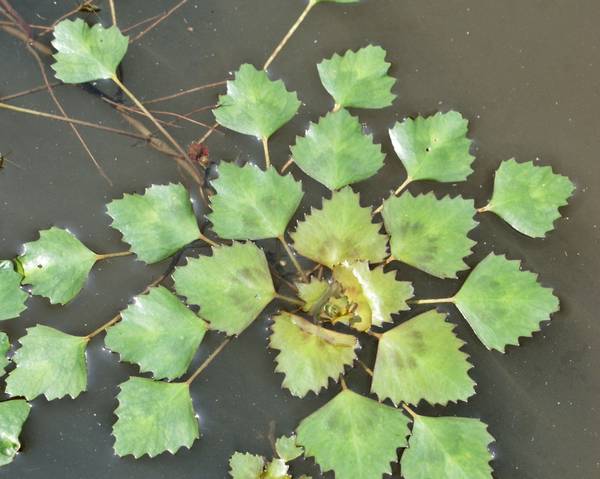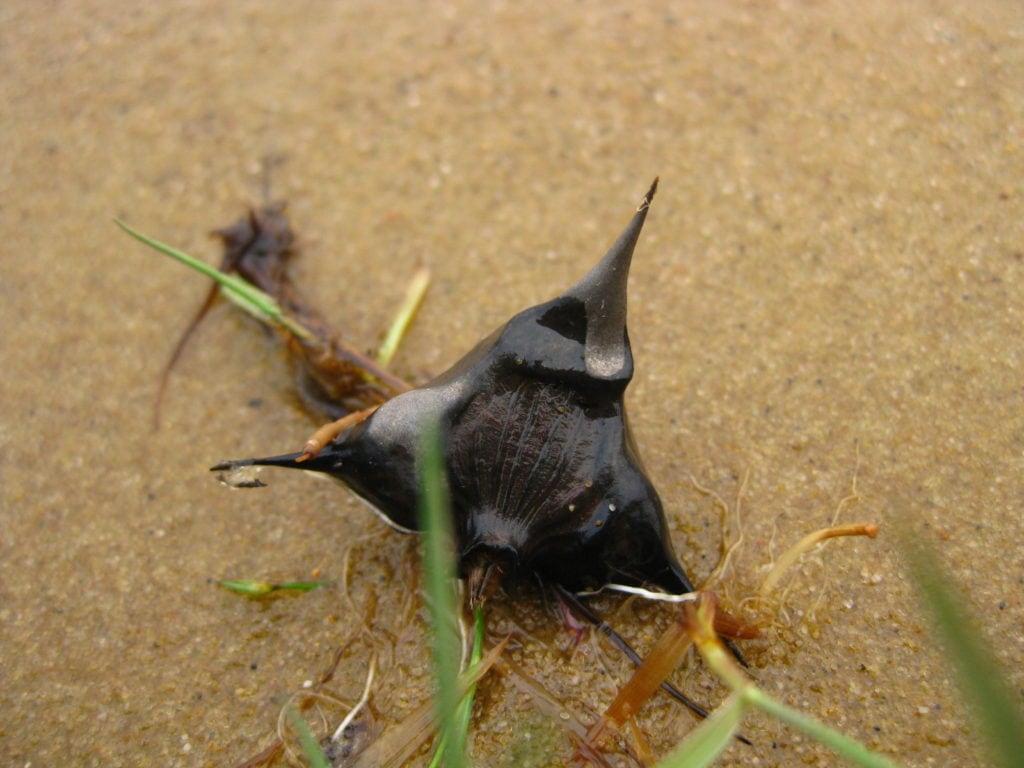Water Chestnut
weed identification
Surface leaves are rhombic with toothed margins, submerged leaves are feather-like and arranged in whorls around the stem. Fruits are a hard, woody or bony nut with sharp spines. Flowers are white and tubular with 4 petals. Not yet recorded in Australia; if encountered, notify authorities. Dies over winter and grows back from seed in spring.
Inhabits freshwater wetlands, lakes, ponds, sluggish reaches of rivers & fresh or slightly brackish reaches of estuaries, preferring nutrient-rich waters.
Reproduces via seed. Insect pollinated.
Water caltrop is usually introduced to an area through intentional planting by humans.
There are none recorded in Australia.
What does Water Chestnut look like?
Disadvantages of Water Chestnut
Water Chestnut is not evident in Australia but if it were it is expected to cause the following problems:
- Can form thick impenetrable mats across wide areas of water
- Blocks access to water
- Has sharp spines on the nuts that can hurt humans and animals
- Outcompetes native plants
- Reduces food and habitat for fish and other aquatic animals
- Prevents recreational activities such as swimming and fishing
- Degrade water quality
treatment
Please do not attempt to treat or dispose of this weed yourself. Report to authorities if you suspect you have Trapa natans.
prevention options
Sale of Trapa natans is Forbidden in Australia.







